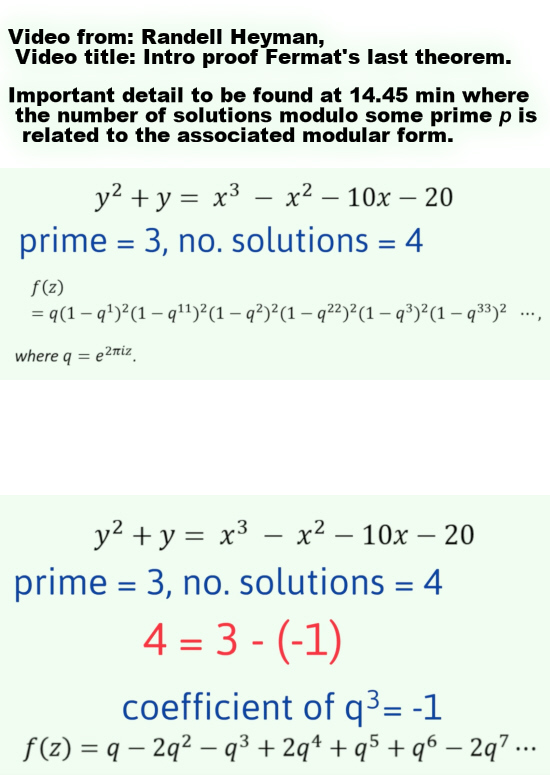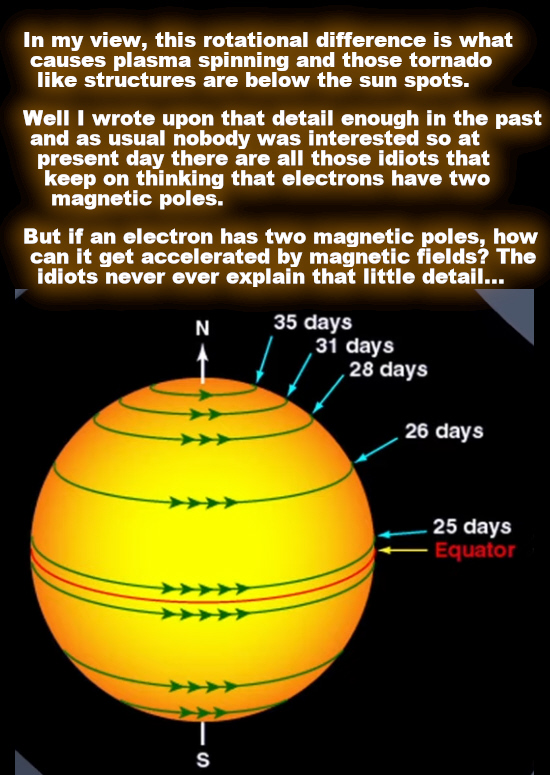Of course we have to take a Frey elliptic curve based on one of the counter examples to the last theorem of Pierre de Fermat for this ‘take it mod 35’ to be meaningful.
Welcome by the way!
A few months back I encountered this problem for the first time and the determinant of all of those Frey elliptic curves is always zero because it contains the factors that ensure it is a counter example to the last Fermat theorem. As such these two factors are always a pair of divisors of zero and as such if you multiply them you get zero. I did not give it a second thought, only remarked the determinant is zero and as such this likely spells some trouble for such a Frey elliptic curve. Recall that if the determinant is zero, there is at least one double zero to be found in your equation. Two weeks back I looked at it with a bit more detail and the result was rather surprising: The cubic part of such a Frey curve indeed gets some double zero, but all in all in the space of integers modulo 35 the thing has four zero’s! But all these Frey curves go like
y^2 = x(x + A)(x – B) so the ‘x-part’ is a degree 3 polynomial. And a 3 degree polynomial has at most 3 zero’s, or not?
Wrong! A 3 degree polynomial has at most 3 zero’s (or precisely 3 zero’s if you count with multiplicity) but in spaces with divisors of zero it is possible to get extra zero’s. On the spaces of 3D complex and circular numbers it is easy to find a parabola with 3 zero’s. Take p(x) = x^2 – x. If you solve for p(x) = 0 you basically try to find numbers that are their own square. After all if a number is it’s own square, there is no denying that
x^2 – x = 0. Of course x = 0 and x = 1 are their own square, but on the three dimensional complex and circular numbers the center of the exponential circle has also that impotant propery. The center is usually denoted as the number alpha and yes that is a zero too. Yet you cannot use such an extra zero in a factorization of such a parabola. The factorization is and stays
x(x – 1) and if we substitute alpha in we get alpha(alpha – 1). But ha ha ha these last two factors are a pair of divisors of zero and that is why it’s zero…
I also found a cute applet that you can use for making graphs of elliptic curves modulo a single prime number. Most of the time I needed modulo 35 or anything with two prime numbers in it and the applet tries to warn me every time when I do that. I also made a few graphs from counter examples to the last theorem of Pierre de Fermat with it. That was relatively funny and made me decide to write this post. Of course we do not need some applet to validate my counter examples to the last theorem because there is plenty of proof. But it was funny anyway.
Links to the two relevant applets:
Elliptic curves over finite fields, and
Curves over finite fields. With the last applet you can make those counter examples to the last theorem of Pierre de Fermat because it allows you to use exponential expressions. It has to be remarked that the applet is not so good at exponential series so already at the stuff modulo 35 it runs awry and returns gibberish instead of a nice flat zero.
This post grew longer as planned before hand, but that is with most posts I write. You always think ‘ah that is simple to explain in just a few words’ but if you try that and also estimate the math content of the average math loving person, I always need more and more words to explain the stuff involved… Well so be it.
This post is 9 pictures long in the format or size I use lately: 550×825 pixels.
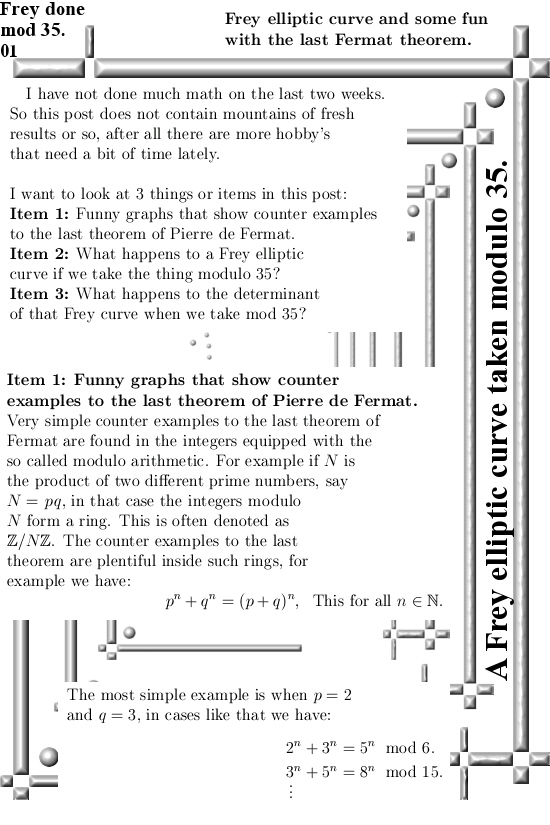
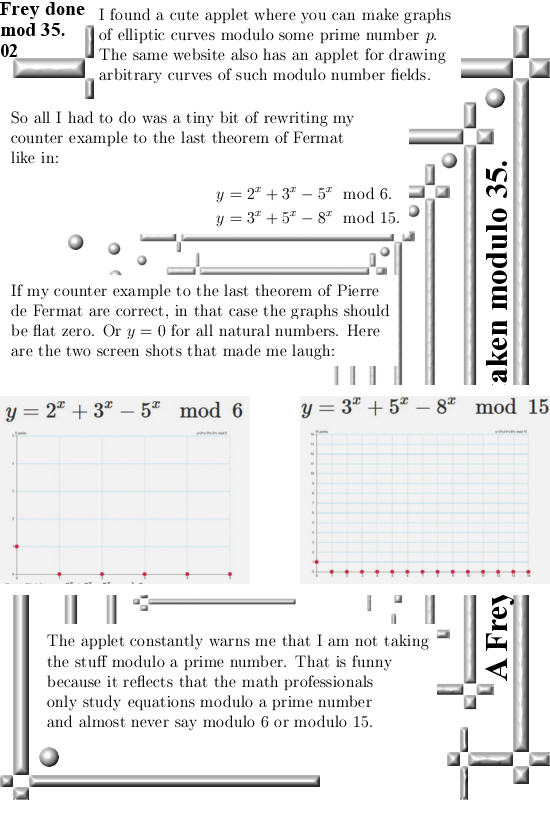
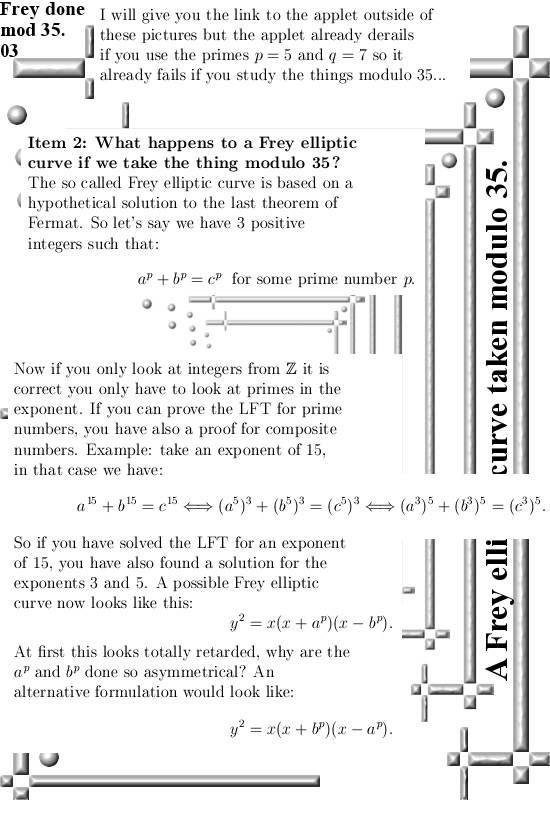
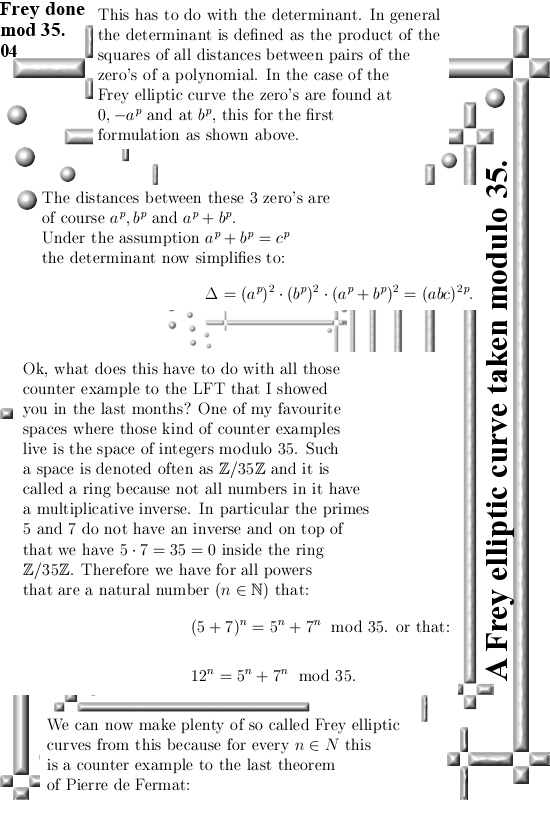
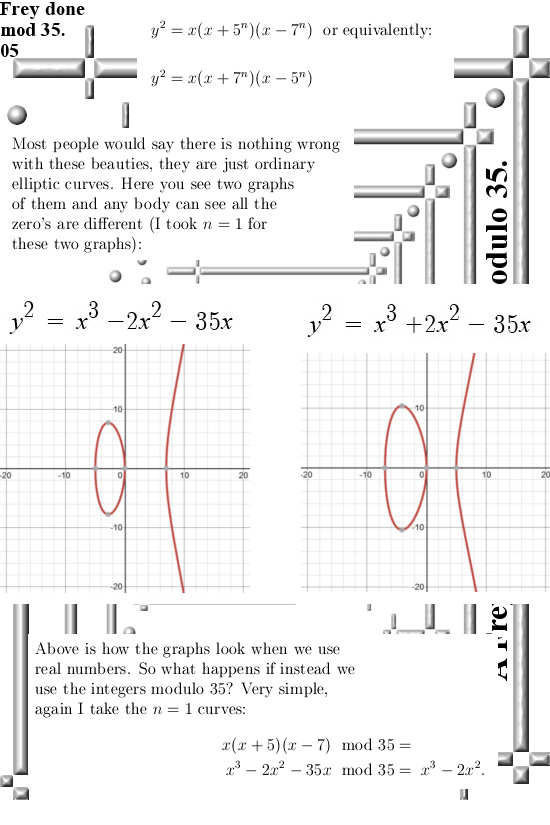
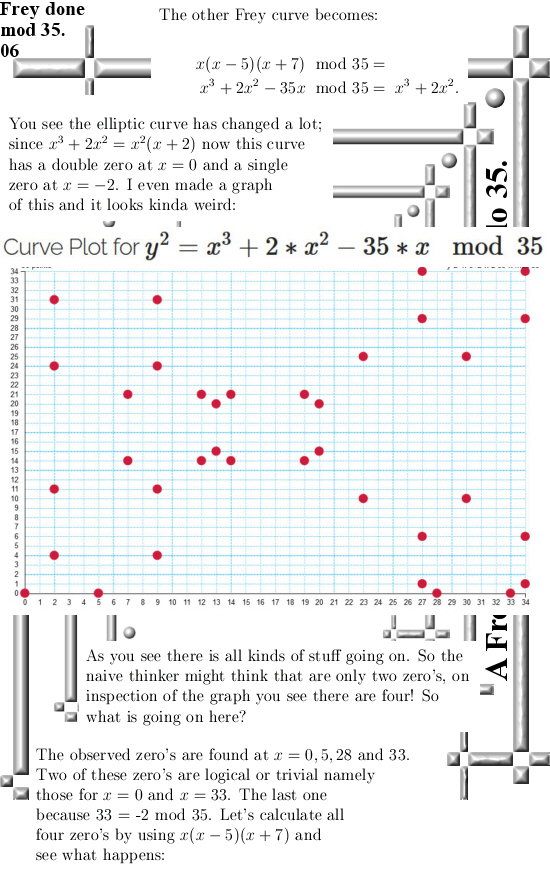
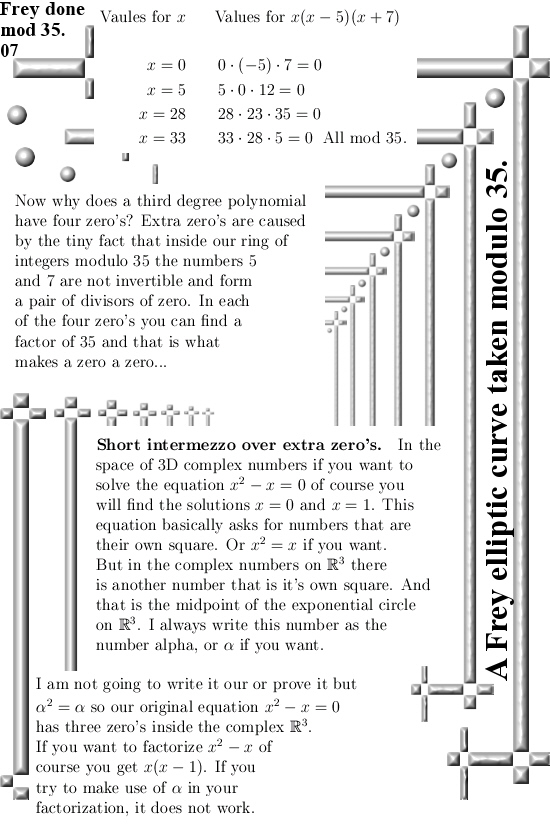
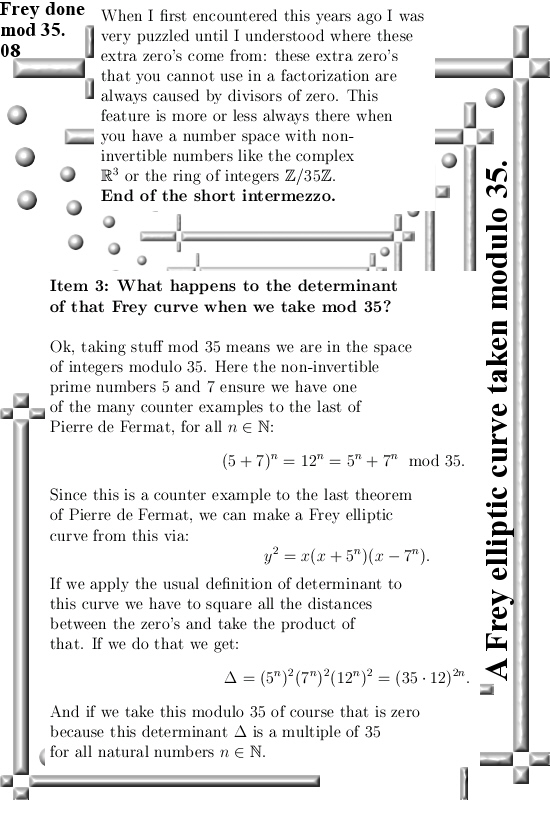
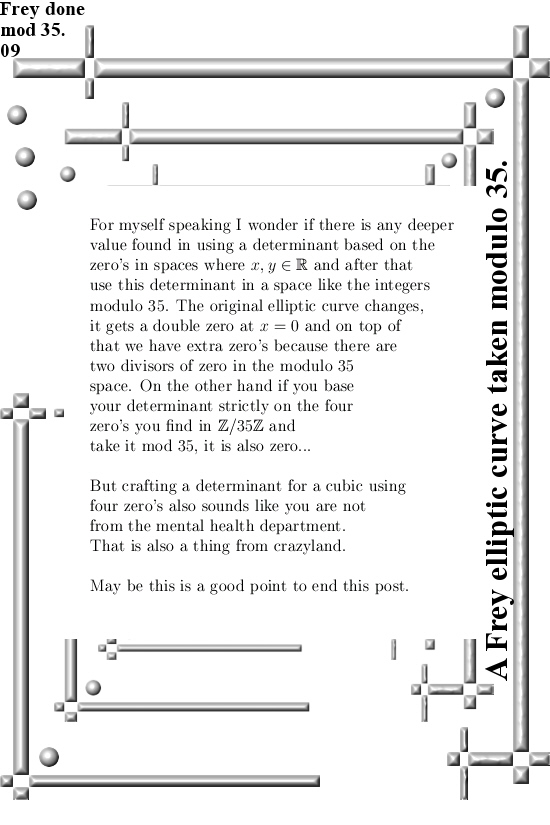
Ok, let’s hope there are no unseen typo’s in the above. I always hate when later I read stuff already published to the internet and find out there are typo’s in it…
The next post is likely an infinite list of counter examples to the last theorem of Pierre de Fermat or it will be about a cute antenna design based on the 3D exponential circles. This cute antenna should produce circular radiation and as far as I know this design is not used anywhere. (I do not know if it is better compared to what we have at present date, after all antenna design is a well developed technical field.)
Ok, that was it for this post.
